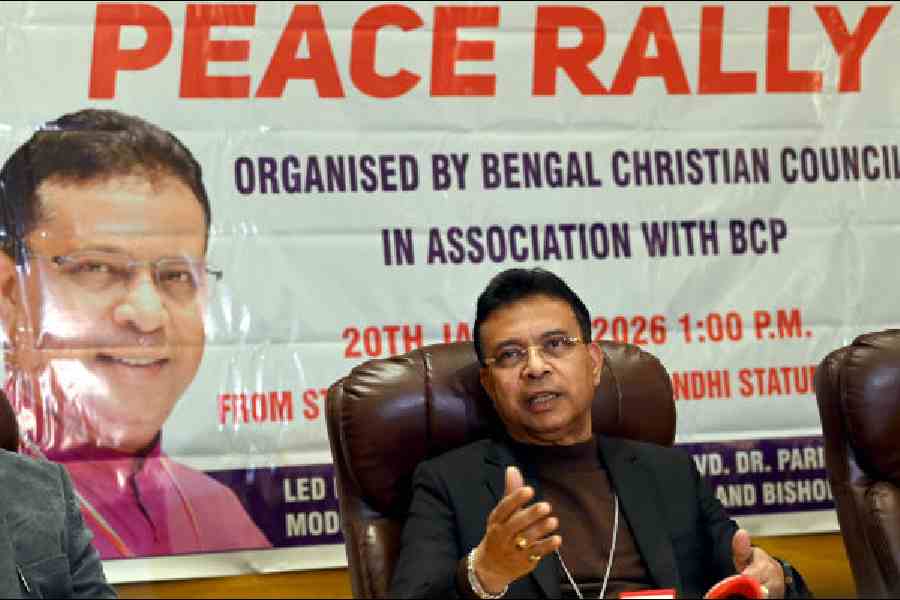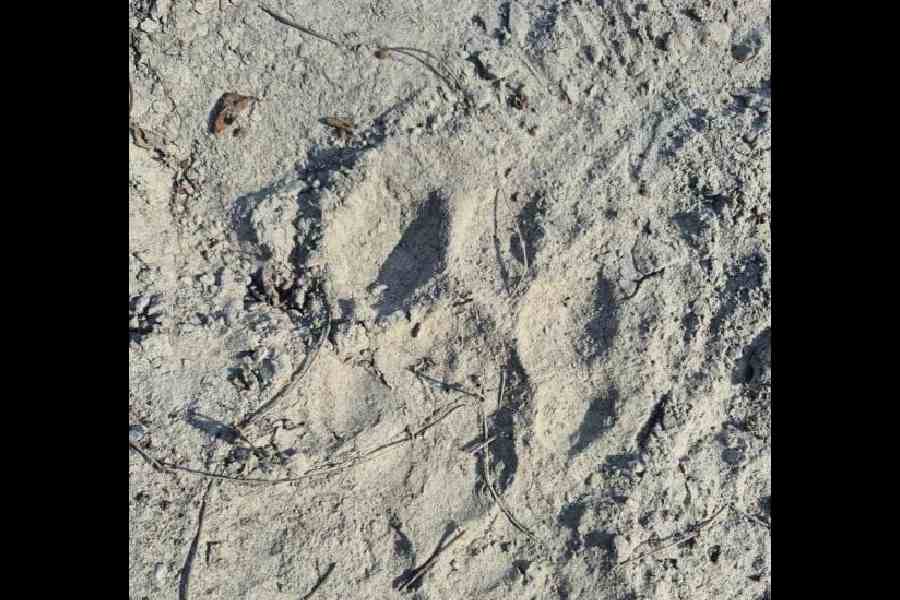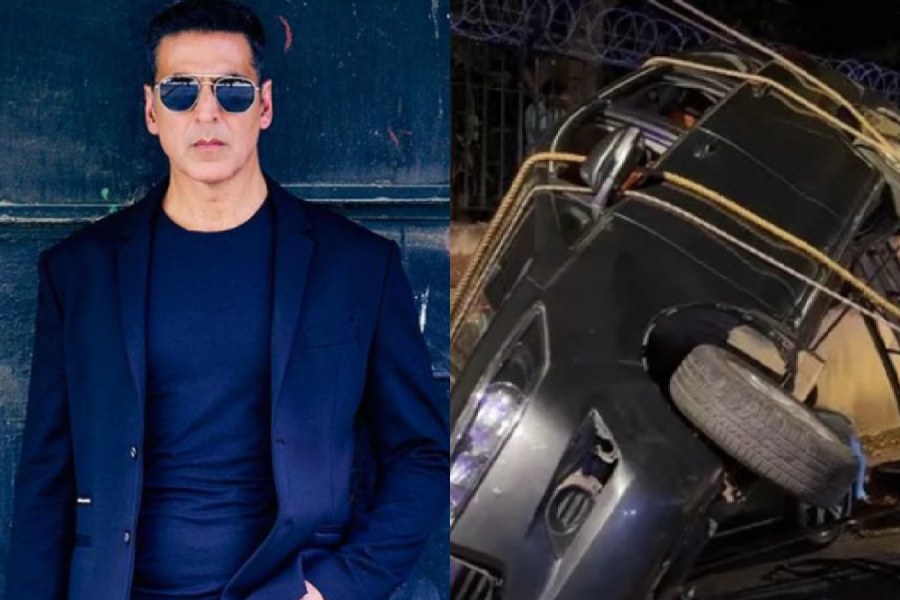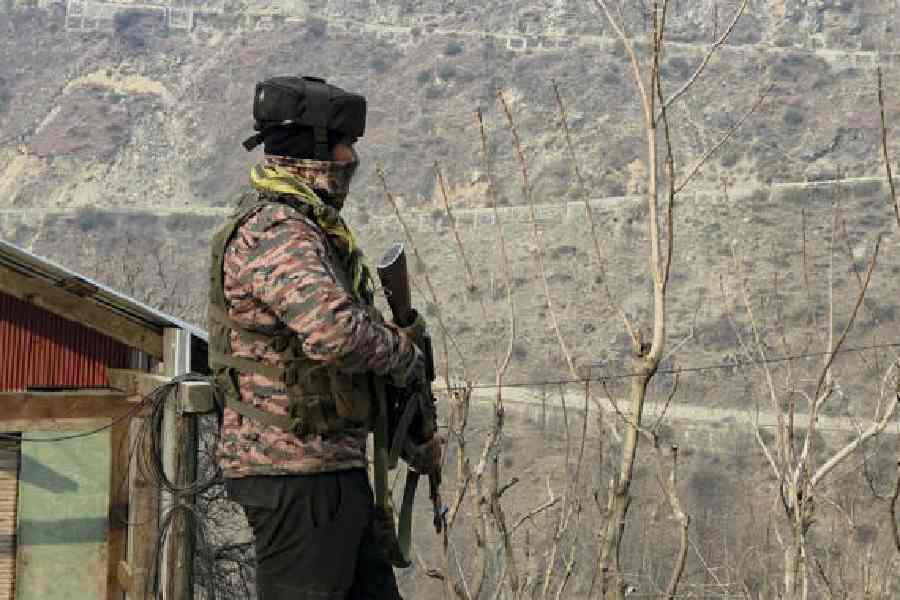 |
| A car on a stretch of the Mughal Road. File picture |
 |
Srinagar, Nov. 29: Sometime soon, tourists may be offered a peek into how Emperor Jehangir had experienced his “Paradise on Earth” four centuries ago.
Visitors will be able to take caravan rides on horse-drawn carriages along the route the Mughal emperors took to their beloved Kashmir from Delhi.
They will see the old serais (inns) where they stopped and freshened themselves, which will be restored as closely as possible to the original.
All this will be on offer along an 84km stretch of road from Bafliaz in Jammu to Shopian in the Valley that lay decaying for centuries but is being renovated along with the serais.
Once this stretch is officially thrown open to the public, it will fill a gap on the 320km “Mughal Road”, offering an alternative route between Jammu and Srinagar and, therefore, between the Valley and the rest of India.
It will also cut the distance between Srinagar and Jammu’s Rajouri and Poonch from about 600km to about 135km, doing away with the current detour through Jammu.
The 84km stretch was made motorable in late 2009 but only local light vehicles ply on it now as parts of the Rs 639-crore project are unfinished.
Unlike the existing 300km Jammu-Srinagar national highway via Banihal, prone to rock falls and looking out on a monotonous landscape, the completed Mughal Road will criss-cross ranges 11,500ft to 13,000ft high, running past pine groves, lush meadows and gushing streams.
If nature provides the beauty, the state government plans to add to it historical grandeur.
State tourism director Talat Parvez said the centuries-old serais, some in ruins and the rest barely standing and abandoned, will be restored as historical monuments with a Mughal-era ambience.
“We also have a proposal to start caravan tourism on the road to let tourists retrace the footsteps of the Mughals and recreate the journey of their caravans,” Parvez said.
So, the tourists will arrive from, say, Srinagar, get off their vehicles, board the carriages and be taken on short trips. Roadside wooden footbridges and sheds will be built so the visitors can take a stroll and enjoy the scenery.
“It will be the first tourist circuit covering parts of both the Valley and Jammu,” state tourism minister Ghulam Ahmad Mir told The Telegraph.
History of a road
Emperor Akbar’s army had swept up the original road, then a mere dirt track across the Pir Panjal mountains, in 1586 to conquer Kashmir by defeating Yousuf Shah Chek.
Soon after, the emperor was on his way to Kashmir leading a huge caravan of horses, chariots and elephants to start a dynasty’s love affair with a valley.
When his son Jehangir fell ill at Achabal in Kashmir, he was carried along this road towards Delhi but died at Chingus in Rajouri in 1627.
His wife Noor Jahan, who wanted to keep the emperor’s death a secret to avert a succession war, removed and buried his intestines at Chingus before perching his body atop an elephant to make him look alive until it reached Lahore.
Tourists will now be able to see the serai at Chingus that houses Jehangir’s “grave”, where his entrails were buried. Serais will be restored at Khanpur, Shadimarg, Hirpur, Thanamandi and other places.
One serai, at Aliabad, is already under Archaeological Survey of India protection but fell into decline after housing troops during the years of militancy.
Some of the other attractions will be the Hirpur wildlife sanctuary, home to the endangered Markhor goats with their up to five-foot-long corkscrew horns; Dubjan with its picturesque meadows and streams and stunning view of the mountains; and Noori Chamb, where the Mughals would bathe under a waterfall.
The road had lost its importance in the 19th century when better roads came up.
As the state government renovated the 84km stretch, it had asked for a tourism development blueprint from the Indian National Trust for Art and Cultural Heritage, a non-profit organisation that works for cultural conservation.
The trust recently handed in its report, which aims to “help recreate the charm of the Mughal era” along the road, said Mohammad Saleem Beig, who heads the trust’s J&K chapter.










